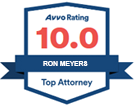In the aftermath of a car accident, determining liability can be a complex and contentious process. While traditional evidence such as eyewitness testimony and police reports are important, dashcam footage has emerged as a highly valuable tool for uncovering the truth. By recording real-time events leading up to and during a collision, dashcam evidence provides an unbiased perspective that can significantly impact car accident liability lawsuits.
For Washington drivers, dashcam footage can make a decisive difference in proving fault and pursuing compensation. This article explores the role of dashcams in car accident claims, the legal process of utilizing this evidence, and how it can help accident victims achieve fair outcomes.
How Dashcam Evidence Can Prove Fault
Dashcam footage captures a wealth of information that can be instrumental in establishing liability. Below are the ways in which it supports vehicle accident claims:
1. Documenting Driver Behavior
Dashcam footage offers an objective record of driver actions leading up to the collision. For example, if the at-fault driver was speeding, running a red light, or failing to yield, the dashcam can capture these behaviors clearly. Such evidence is especially useful when there are conflicting accounts of the accident.
2. Disproving Fault
In some cases, an at-fault driver may attempt to shift blame to the victim. Dashcam footage can refute false claims by showing what actually occurred. For example, it can demonstrate that you were driving within your lane or obeying traffic signals at the time of the accident.
3. Capturing Environmental Conditions
Factors such as weather, road conditions, and visibility often play a role in car accidents. A dashcam can capture slippery roads, poor lighting, or obstructed signage, providing context for why the collision occurred and whether external factors contributed.
4. Recording Other Road Users
Dashcams not only capture the actions of the vehicles involved in the crash but also document surrounding traffic, pedestrians, and other road users. This broader perspective can help determine whether a third party contributed to the accident.
Why Dashcam Evidence Is Critical in Washington Car Accident Claims
Washington follows a comparative fault system, meaning that more than one party can share responsibility for a car accident. In such cases, your compensation may be reduced by the percentage of fault assigned to you. Dashcam footage can be pivotal in reducing your liability by providing clear evidence of the other driver’s negligence.
Insurance Claims
Insurance companies often scrutinize claims, searching for ways to minimize payouts. Dashcam footage can counteract their attempts to deny or undervalue your claim by providing irrefutable proof of liability. It is especially effective in hit-and-run cases or when dealing with uncooperative drivers.
Lawsuits
When filing a personal injury lawsuit, dashcam footage can strengthen your case in court. By presenting an objective account of the accident, you increase your chances of achieving a favorable settlement or verdict.
How to Properly Use Dashcam Evidence
To maximize the value of your dashcam footage, follow these steps:
1. Preserve the Footage
Dashcams often overwrite old recordings, so it’s crucial to save the footage immediately after the accident. Transfer the video to a secure device or cloud storage to ensure it remains intact.
2. Provide the Footage to Authorities
Sharing your dashcam video with law enforcement can enhance the accuracy of the police report. A detailed and accurate report may play a significant role in your insurance claim or lawsuit.
3. Share the Evidence with Your Attorney
An experienced personal injury attorney in Olympia can analyze the footage and determine how best to use it in your case. They will ensure that the evidence is presented in a way that strengthens your position during negotiations or at trial.
4. Ensure Admissibility
For dashcam footage to be admissible in court, it must be clear, relevant, and unaltered. Footage that has been edited or tampered with may be dismissed, so it’s essential to keep the original file intact.
Challenges Associated with Dashcam Evidence
While dashcam footage is highly effective, it’s not without limitations. Here are some challenges to consider:
1. Field of View
Most dashcams only record what happens directly in front of the vehicle. Accidents involving side or rear impacts may require additional evidence to establish liability.
2. Privacy Concerns
Washington has strict privacy laws, and dashcam footage that inadvertently captures sensitive information or unrelated individuals could face legal scrutiny. Consult with an attorney to ensure your footage complies with these laws.
3. Technical Issues
Low-quality recordings or obstructed views may reduce the effectiveness of dashcam footage. Drivers should invest in a high-quality dashcam and regularly check that it’s functioning correctly.
How Ron Meyers and Associates Can Help
If you’ve been involved in a car accident in Washington and have dashcam footage, Ron Meyers and Associates can help you use this evidence to strengthen your claim. As experienced personal injury attorneys based in Olympia, we help accident victims recover the compensation they deserve.
Our team will review your footage, gather additional evidence, and handle negotiations with insurance companies or court proceedings on your behalf. Contact us today for a free consultation and let us provide the legal help you need to secure your rights.





